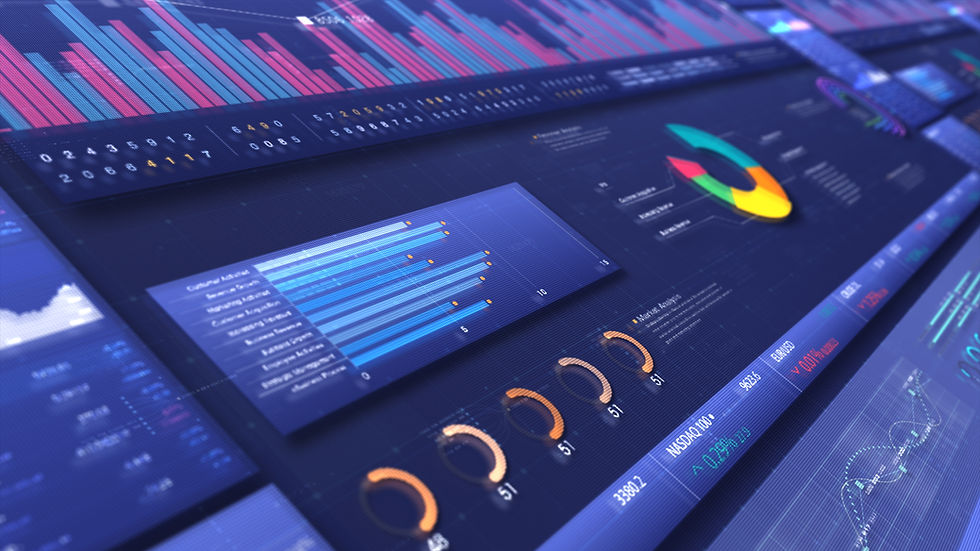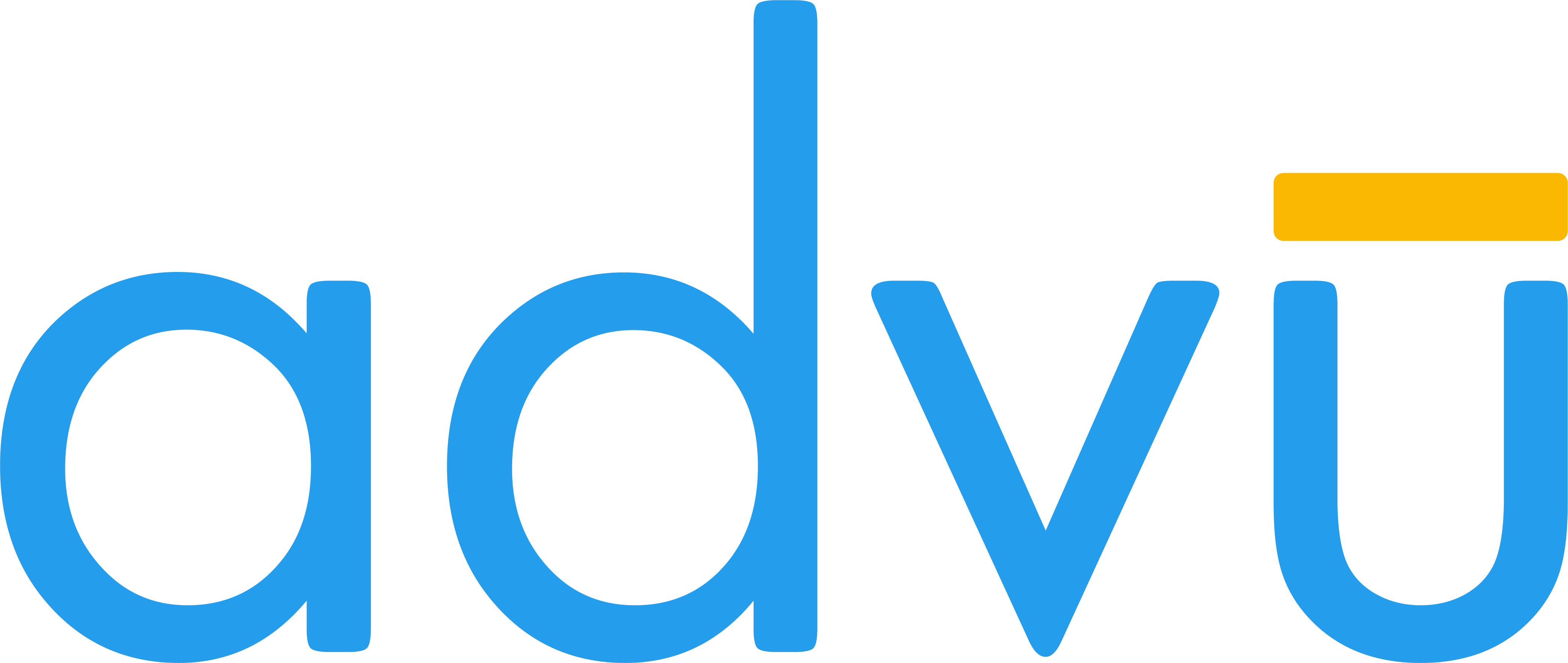Digital Advertising Trends 2025: The Future of AI in a Data-Driven World
- Colin Williams
- Mar 4
- 8 min read

Social media has become the life-blood of digital advertising's future with more than 4.7 billion people using Facebook, Instagram, and TikTok daily. Brands now connect with their audiences differently, thanks to technology advances and new consumer behaviors.
The digital advertising world continues to grow with fascinating trends. AI transforms data analysis and campaign optimization, while augmented reality creates immersive experiences. IKEA and L'Oreal already allow customers to see products in their spaces. The advertising technology landscape will change significantly when third-party cookies phase out in 2024, leading to privacy-compliant solutions and attention metrics.
This piece will show what works in digital advertising for 2025. We'll look at programmatic innovations and new technologies that alter the map of brand-audience connections.
Current State of Digital Advertising
Digital advertising has hit record levels, with the global market size reaching USD 563.40 billion in 2021 [1]. The industry keeps growing rapidly and should touch USD 1.30 trillion by 2027 [1]. The market showed strong performance in 2024, hitting USD 488.4 million [2].
Market size and growth
The digital advertising world maintains impressive momentum in key sectors. Search advertising guides revenue generation and takes 40% of digital spend, bringing in more than USD 316.00 billion in 2024 [3]. Retail media has become a revolutionary force that accounts for 21.2% of global digital ad spend [3].
Mobile platforms rule the advertising world and claim nearly two-thirds of digital investments [3]. Programmatic services have gained huge popularity, making up 82.4% of spend and generating over USD 650.00 billion in 2024 [3].
North America leads the pack with the highest revenue share at over 31% in 2024 [2]. The Asia-Pacific market shows amazing potential and should grow at the highest CAGR of over 17% from 2025 to 2030 [2].
Key industry players
Tech giants control the digital advertising ecosystem [1]. Alphabet, Google's parent company, stays the top force in digital advertising and generated revenues of USD 257.64 billion in 2021 [1]. Meta comes next with digital advertising revenues of USD 100.17 billion in 2021 [1].
Amazon has grown into a powerful competitor and earned USD 469.82 billion in 2021 [1]. Microsoft Corporation's Ad Solutions platform brought in revenues of USD 198.27 billion [1]. Alibaba has become a major player in the Asian market and generated USD 134.56 billion in 2021 [1].
These five companies now control more than half of global ad dollars [4]. Their influence spans advertising channels of all types, from search and social media to e-commerce platforms. The industry keeps evolving as new players enter the market and established companies adapt to changing user priorities and tech advances.
Growing internet usage and rising smartphone adoption worldwide support the market's expansion [5]. Privacy concerns and regulations could challenge market growth [5]. All the same, the industry keeps moving upward, powered by tech innovation and evolving consumer behavior.
Technology Reshaping Ad Delivery

AI and machine learning have changed the way digital ads reach consumers. Recent data suggests AI-powered advertising spend will reach USD 1.30 trillion in the next decade [6].
Programmatic advertising advances
Programmatic advertising has grown into a smart system that automates ad buying through advanced algorithms. It now makes up 89% of all digital ad spend [7]. Advertisers can target specific audiences with great precision through demand-side platforms (DSPs) and supply-side platforms (SSPs).
AI has improved programmatic capabilities by a lot. Machine learning algorithms look at big amounts of data and optimize campaigns based on:
Ad format and environment
Browser and device type
Geographic location
Operating system
Site placement
Real-time bidding improvements
Real-time bidding (RTB) is the life-blood of programmatic advertising that lets advertisers buy ad inventory for each impression [7]. The bidding happens in milliseconds between page loads [8].
The system works on a cost-per-mille (CPM) model and advertisers can adjust their campaigns on the fly [7]. This flexibility helps cut down wasted impressions by showing ads to the right audiences [9].
Cross-device targeting capabilities
Cross-device targeting has become crucial as people switch between devices throughout their day. The average US household's internet-connected devices now number 22 [10], which creates multiple touchpoints for marketers.
Cross-device targeting uses two main methods:
This smart approach helps advertisers reach consumers naturally across devices of all types. The result is better engagement rates and more accurate campaign performance measurements [10]. Cross-device targeting also lets marketers use sequential messaging to guide users through the conversion funnel [11].
Consumer Behavior Impact

Digital content consumption has changed dramatically in recent years. Data reveals that 40% of U.S. consumers canceled at least one subscription service in early 2024 [3]. Generation Z shows a different trend with their digital content subscriptions rising by 17.2% [3].
Media consumption patterns
Social media platforms now command user attention like never before. Research shows 54% of users make purchasing decisions based on social media ads [3]. TikTok has become an innovator in e-commerce, where 58% of users look for shopping ideas [3]. Young adults between 18-24 years now buy products they find through TikTok Shop 3.2 times more often [3].
Content creators shape how consumers choose products today. The numbers tell an interesting story - 54% of consumers follow their favorite creators on multiple platforms [3]. Young people show distinct preferences, with 47% of Gen Z and millennials choosing live streams and social media videos as their go-to video content [3].
Privacy concerns and solutions
Privacy stands at the heart of digital advertising concerns today. Ad networks collect and share almost every click, location, search and view [12]. GDPR and similar regulations try to protect users, but determined companies often bypass these restrictions through server-to-server connections [12].
New solutions tackle these challenges:
Secure data combination in trusted execution environments
Differential privacy algorithms that protect individual identities
Noise addition techniques to prevent user tracking [12]
Trust matters more than ever - 89% of U.S. consumers no longer automatically trust brands with their data [13]. Companies respond by implementing:
Clear privacy policies and opt-in mechanisms
Strong data security measures
User-friendly preference centers [14]
The advertising world moves steadily toward privacy-respecting technology. These new approaches help deliver relevant ads while keeping personal information safe. Advertisers can measure and optimize campaigns while mathematical frameworks maintain user anonymity [12]. This balanced strategy works well for ad delivery without compromising consumer privacy, marking a fundamental change in digital advertising's operation.
Future-Proof Ad Strategies

Privacy-centered strategies have become crucial for successful digital advertising campaigns. Marketers must adapt to a cookieless future, and new approaches are emerging that work in advertising.
First-party data utilization
First-party data proves its worth. Marketers who use it well generate double the incremental revenue from single ad placements [5]. This valuable data comes straight from customer interactions and helps understand audience behavior better.
Companies create strategic value exchanges to collect first-party data by offering:
Early access to product launches
Individual-specific product recommendations
Back-in-stock notifications
Loyalty programs with exclusive benefits
Studies show 90% of consumers share personal information willingly with proper incentives [5]. Companies must focus on clear data practices and privacy policies to keep customer trust.
Contextual targeting approach
Contextual targeting stands out as a powerful alternative to behavioral tracking. This method analyzes webpage content to deliver relevant advertisements instead of relying on personal data [15].
Modern contextual targeting uses advanced techniques:
Category-based placement
Keyword targeting
Semantic analysis using machine learning
Emotion and sentiment assessment
This method shows remarkable results. Ads placed in contextually relevant environments consistently deliver better campaign results [16]. Contextual targeting works with content of all types, letting advertisers react quickly to trends and seasonal content.
Brand safety measures
Brand safety has become crucial in the digital world. Companies must protect their reputation by avoiding ad placement next to harmful content [17]. Modern brand safety strategies now include:
Pre-screen protection assesses content before impression delivery and maximizes ad spend efficiency [17]. Post-bid measurement studies ad performance after purchase and gives an explanation for future campaign improvement.
Brand suitability has grown beyond simple safety measures. It arranges content with specific brand values and campaign goals [18]. This detailed approach will give advertisers space that strikes a chord with target audiences while protecting brand integrity.
Conclusion

Digital advertising has reached a turning point in 2025. Major tech companies control over half of global ad spending and AI solutions are changing how ads connect with consumers. This new landscape creates an advertising ecosystem where precision matters as much as privacy.
Brands now get better results by using first-party data and contextual targeting. Companies that welcome these methods have seen their revenue double from individual ad placements. TikTok and other social platforms have become powerful sales channels where users naturally find and purchase products.
Programmatic advertising with immediate bidding gives brands pinpoint accuracy in targeting. Brands can now send consistent messages to the average household's 22 connected devices by combining this technology with cross-device capabilities.
Future success in digital advertising depends on balancing tech innovation with consumer trust. Campaigns will succeed based on privacy-focused solutions, clear data practices, and brand safety measures. Marketers should build authentic connections with their audience and use technology to boost the user experience without being intrusive.
FAQs
Q1. What are the key trends shaping digital advertising in 2025? AI-powered solutions, programmatic advertising, and cross-device targeting are reshaping ad delivery. Social media platforms are becoming powerful e-commerce channels, while privacy-focused strategies and contextual targeting are gaining importance.
Q2. How is technology impacting ad delivery in 2025? Technology is revolutionizing ad delivery through advanced programmatic advertising, real-time bidding improvements, and sophisticated cross-device targeting capabilities. AI and machine learning are optimizing campaigns based on multiple factors, enhancing precision and effectiveness.
Q3. What strategies are advertisers using to address privacy concerns? Advertisers are focusing on first-party data utilization, implementing clear privacy policies, and adopting privacy-respecting technologies. They're also offering value exchanges to gather data transparently and using contextual targeting as an alternative to behavioral tracking.
Q4. How are consumer behaviors influencing digital advertising strategies? Shifting media consumption patterns, especially on social media platforms, are driving advertisers to adapt their strategies. Content creators are playing a crucial role in shaping consumer choices, and there's an increased focus on delivering personalized, relevant content across multiple devices.
Q5. What is the projected growth of the digital advertising market by 2025? The global digital advertising market is expected to reach USD 1.30 trillion by 2027, with a compound annual growth rate (CAGR) of 13.9%. North America holds the highest revenue share, while the Asia-Pacific market is projected to grow at the highest CAGR of over 17% from 2025 to 2030.
References
[4] - https://www.investors.com/news/advertising-industry-to-hit-1-trillion-dominated-by-the-new-big-5/




Comments